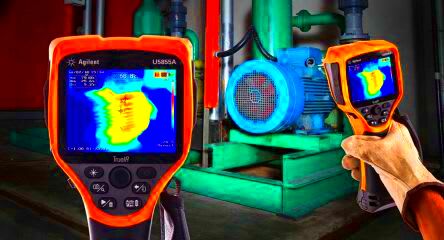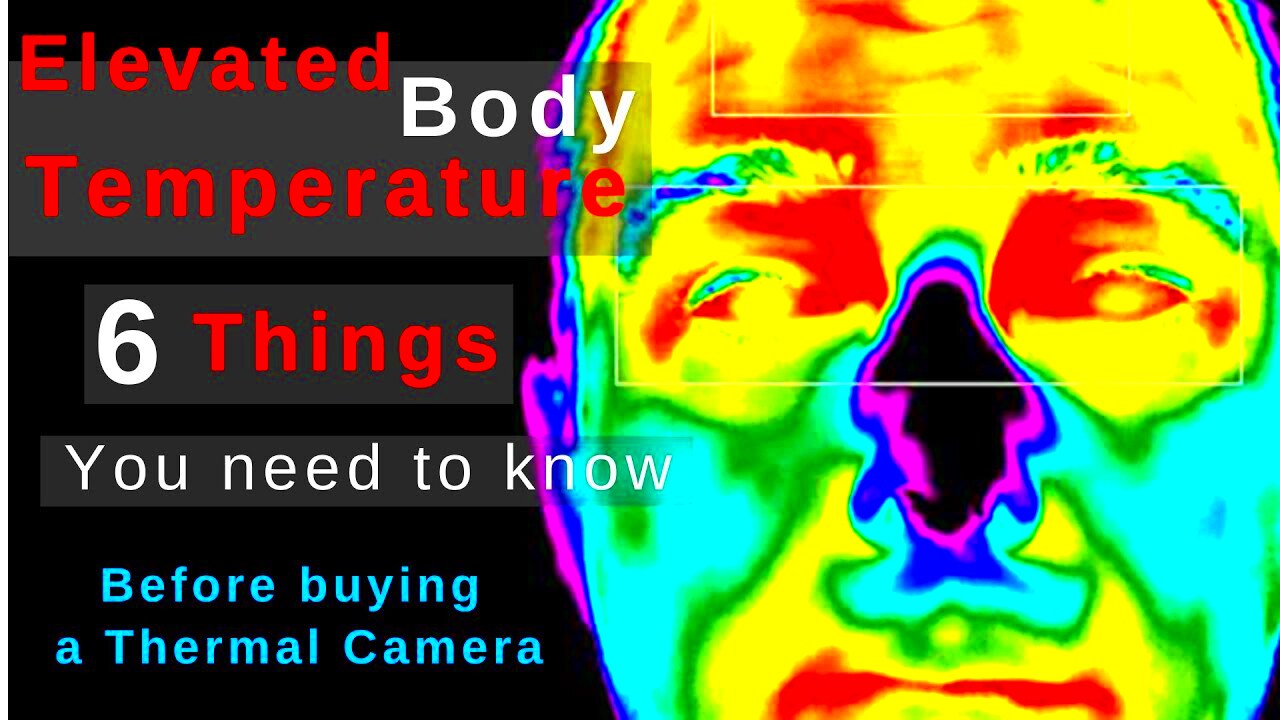Thermal imaging technology captures the heat emitted by objects and converts it into images. Unlike regular cameras that rely on visible light, thermal cameras see the infrared radiation emitted by all objects. This technology is used in various fields, from medical diagnostics to military applications.
At the core of thermal imaging are sensors that detect temperature differences. When you look through a thermal camera, you’ll see a colorful representation of these differences. Warmer objects appear in bright colors like red and yellow, while cooler ones show up in blue or purple. This ability to visualize heat makes thermal cameras invaluable in numerous situations.
Benefits of Using Thermal Imaging Cameras

There are several advantages to using thermal imaging cameras, making them a popular choice in various industries:
- Safety and Security: Thermal cameras can detect intruders in complete darkness, providing enhanced security.
- Energy Efficiency: They help identify heat leaks in buildings, allowing for better insulation and reduced energy costs.
- Preventive Maintenance: Thermal imaging can detect overheating electrical components, preventing potential failures.
- Medical Applications: In healthcare, these cameras assist in diagnosing conditions based on temperature variations.
- Search and Rescue: They can locate people in difficult conditions, such as smoke or darkness, by detecting body heat.
Overall, the benefits of thermal imaging cameras extend beyond just visuals. They provide critical insights that can save time, money, and even lives.
Key Features to Consider When Purchasing
When shopping for a thermal imaging camera, it's essential to consider several key features to ensure you get the best product for your needs. Here are some important factors:
- Resolution: Higher resolution means clearer images. Look for cameras with at least 320x240 pixels for decent quality.
- Temperature Range: Ensure the camera can measure the temperature range relevant to your applications, whether it’s for industrial or medical use.
- Field of View: A wider field of view allows you to capture more area, which is helpful in larger spaces.
- Battery Life: Consider how long the camera can operate on a single charge, especially for outdoor or extended use.
- Durability: Look for rugged designs, especially if you plan to use the camera in harsh conditions.
- Connectivity Options: Features like Wi-Fi or Bluetooth can help you share images easily and integrate with other devices.
Choosing the right thermal imaging camera involves balancing these features with your specific needs and budget. Take your time to research and compare different models before making a purchase.
Types of Thermal Imaging Cameras Available
When it comes to thermal imaging cameras, you’ll find a variety of types designed for specific applications and environments. Understanding these different types can help you choose the right one for your needs. Here’s a rundown of the most common types of thermal cameras:
- Handheld Thermal Cameras: These are portable and easy to use, making them perfect for quick inspections or general use.
- Fixed Thermal Cameras: Designed for permanent installations, these cameras are ideal for monitoring specific areas like building perimeters or industrial sites.
- Drone Thermal Cameras: Mounted on drones, these cameras provide aerial views, making them useful for large areas, such as farms or power lines.
- Smartphone Thermal Cameras: These compact devices attach to smartphones, providing a convenient way to access thermal imaging on the go.
- Fusion Cameras: These combine thermal and visible light images, allowing you to see both heat signatures and the standard view in one frame.
Each type of camera comes with its own set of features and benefits. The right choice depends on what you plan to use it for, so take time to consider your specific needs before making a decision.
How to Choose the Right Camera for Your Needs
Choosing the right thermal imaging camera can feel overwhelming with so many options out there. But don’t worry! By following a few straightforward steps, you can make an informed decision. Here’s how:
- Identify Your Purpose: Ask yourself what you need the camera for. Is it for home inspections, industrial maintenance, or outdoor activities?
- Consider the Environment: Will you be using it indoors or outdoors? If it’s outdoors, look for weather-resistant models.
- Budget: Set a budget. Thermal cameras can range from a few hundred to several thousand dollars, so knowing your budget helps narrow options.
- Research Features: Focus on the key features mentioned earlier—resolution, temperature range, and battery life. Make a list of must-have features versus nice-to-have ones.
- Read Reviews: Look for user reviews and expert opinions on different models to gauge their performance and reliability.
By considering these factors, you’ll be better equipped to select a thermal imaging camera that meets your needs and offers great value for your investment.
Common Applications of Thermal Imaging
Thermal imaging cameras have a wide range of applications across various industries. Their ability to visualize heat makes them incredibly versatile. Here are some of the most common uses:
- Building Inspections: Identify heat leaks, insulation issues, and moisture problems in buildings.
- Electrical Inspections: Detect overheating in electrical panels, circuits, and equipment, helping prevent failures.
- Medical Diagnostics: Used to spot inflammation and circulatory issues, providing valuable insights into patients’ health.
- Firefighting: Help firefighters locate hotspots and assess fire damage, making rescue operations safer and more efficient.
- Search and Rescue: Aid in locating individuals in difficult conditions like smoke or darkness by detecting body heat.
- Agriculture: Monitor crop health and identify irrigation issues by assessing plant temperature.
These examples illustrate just how valuable thermal imaging technology is across various sectors. As this technology continues to evolve, we can expect even more innovative applications in the future.
Tips for Maintaining Your Thermal Imaging Camera
To get the most out of your thermal imaging camera, regular maintenance is essential. Just like any other piece of equipment, proper care will help extend its life and ensure it functions at its best. Here are some practical tips for maintaining your thermal camera:
- Keep It Clean: Regularly clean the lens with a soft, lint-free cloth to avoid smudges and dust that can impact image quality.
- Store Properly: When not in use, store the camera in a protective case to prevent damage from dust, moisture, or accidental drops.
- Check the Batteries: Make sure to keep the batteries charged and replace them as needed. Consider having spare batteries for longer sessions.
- Software Updates: Keep the camera's software updated to benefit from the latest features and improvements.
- Calibrate Regularly: Follow the manufacturer’s recommendations for calibration. This helps maintain accuracy in temperature readings.
- Handle with Care: Avoid exposing the camera to extreme temperatures or harsh environments unless it’s designed for those conditions.
By following these tips, you’ll help ensure that your thermal imaging camera remains in top condition, providing reliable performance for years to come.
Frequently Asked Questions
Many people have questions about thermal imaging cameras, especially if they are considering purchasing one for the first time. Here are some frequently asked questions and their answers:
- What is the difference between thermal and night vision? Thermal imaging detects heat, while night vision amplifies available light. This means thermal cameras work in total darkness.
- Can thermal cameras see through walls? No, thermal cameras cannot see through walls, but they can detect heat signatures from objects behind them.
- How much do thermal imaging cameras cost? Prices vary widely based on features and specifications, ranging from a few hundred to several thousand dollars.
- Are thermal cameras easy to use? Yes, most thermal cameras are user-friendly, with intuitive interfaces that allow you to start capturing images quickly.
- Do I need special training to use one? While training is not mandatory, familiarizing yourself with the camera and its features can enhance your effectiveness.
These answers should help clarify some common concerns about thermal imaging cameras, making it easier for you to navigate your options.
Conclusion and Final Thoughts
Thermal imaging cameras offer a unique way to visualize heat and can be a powerful tool in various fields. Whether you're looking to enhance safety, improve energy efficiency, or conduct medical assessments, there's a thermal camera out there for you. By understanding the different types available, considering your specific needs, and maintaining your equipment, you can make the most out of this technology.
As you explore your options, remember to keep the features that matter most to you in mind. With the right knowledge and tools, you can successfully leverage thermal imaging to gain valuable insights and make informed decisions.
In the end, investing in a thermal imaging camera could open up a world of possibilities for both personal and professional use. Happy hunting for your perfect thermal camera!

 admin
admin








